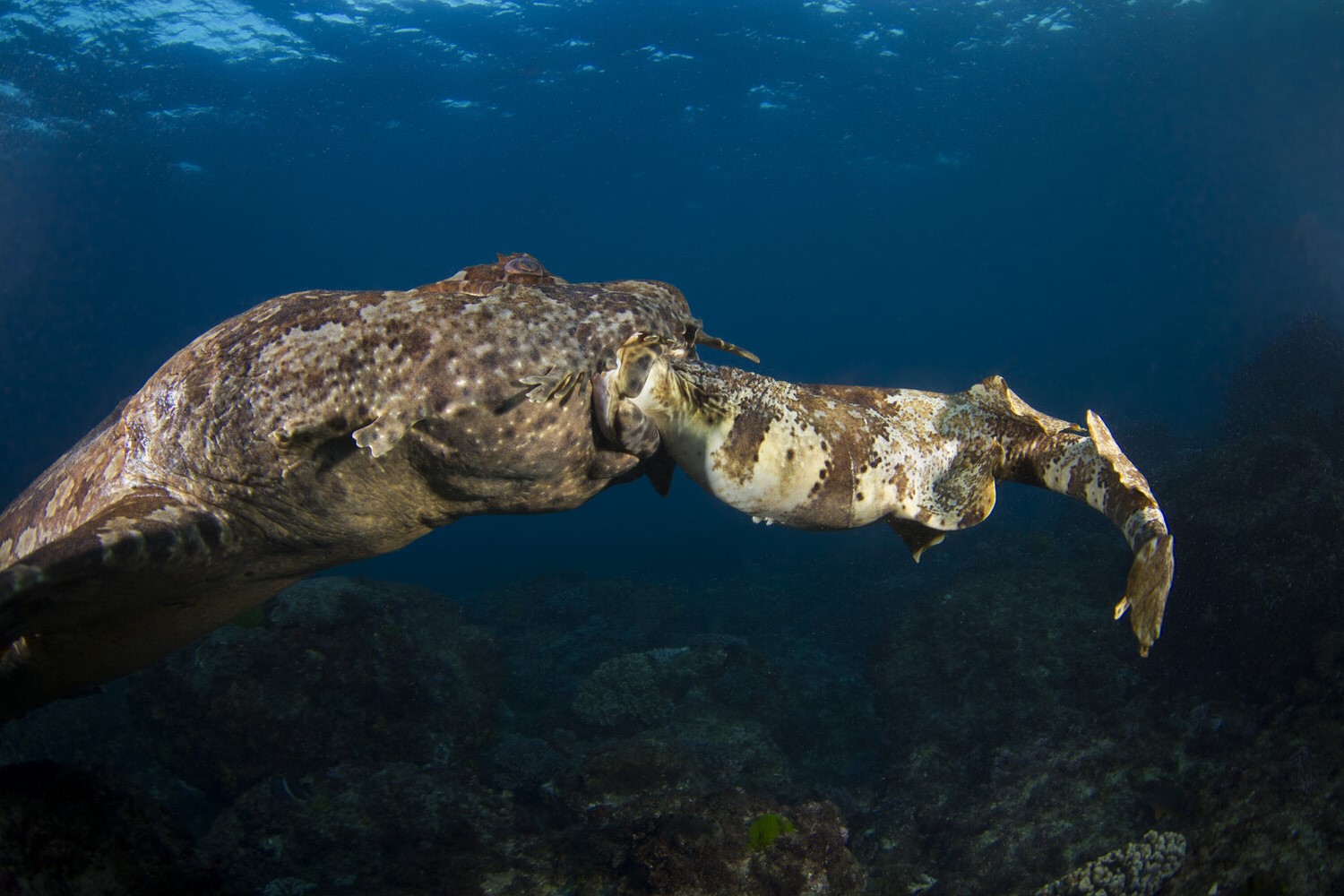
Ever wondered about the ocean's most intriguing yet lesser-known inhabitants? Wobbegong sharks might just top that list! These carpet-like creatures are the ocean's masters of disguise, blending seamlessly with the seafloor. But what else is there to know about these fascinating fish? From their unique name to their surprising diet, wobbegong sharks are full of surprises. OhMyFacts is here to pull back the curtain on these mysterious marine animals. With 20 jaw-dropping facts, you're about to dive deep into the world of wobbegongs. Ready to have your mind blown by the wonders of the deep? Let's get started and uncover the secrets of wobbegong sharks together!
Key Takeaways:
- Wobbegong sharks are fascinating creatures with unique camouflage and ambush predation techniques. They play a crucial role as top predators in the marine ecosystem, despite their slow-moving nature.
- Efforts to protect wobbegong sharks are important due to threats from overfishing and habitat destruction. More research is needed to understand their populations and ensure their conservation.
What Are Wobbegong Sharks?
Wobbegong sharks, often overlooked in the vast oceanic world, possess unique characteristics that set them apart from their more famous counterparts. Known for their distinctive, carpet-like appearance, these creatures are a marvel of the marine ecosystem.
-
Wobbegong sharks belong to the family Orectolobidae. This group is distinguished by its flat bodies and elaborate, patterned skin, which helps them blend seamlessly with the ocean floor.
-
The name "wobbegong" is believed to originate from an Australian Aboriginal language, meaning "shaggy beard." This refers to the fringe of small lobes around their mouths, resembling a beard, which aids in camouflage and hunting.
Where Do Wobbegong Sharks Live?
Understanding the habitat of wobbegong sharks reveals much about their behavior and how they've adapted to their environments.
-
These sharks are predominantly found in the warm, shallow waters of the Pacific and Indian Oceans, with a high concentration around Australia.
-
Wobbegong sharks prefer rocky reefs, sandy bottoms, and seagrass beds. These environments provide ample hiding spots for ambush predation.
The Diet of Wobbegong Sharks
Wobbegong sharks have a fascinating approach to feeding, which relies heavily on their ability to remain unseen by prey.
-
Their diet mainly consists of fish, octopuses, and crustaceans. Wobbegongs are ambush predators, lying in wait for an unsuspecting meal to pass by.
-
At night, wobbegong sharks become more active hunters, utilizing their camouflage to sneak up on prey or waiting motionless for hours until prey comes within reach.
Reproduction and Lifespan
The reproductive habits and lifespan of wobbegong sharks are intriguing aspects of their biology, showcasing the diversity of shark reproductive strategies.
-
Wobbegong sharks are ovoviviparous, meaning their eggs develop and hatch inside the female's body, and she gives birth to live young.
-
A female wobbegong can give birth to a litter ranging from a few pups to over 20, depending on the species.
-
These sharks have a relatively long lifespan, with some individuals living up to 30 years in the wild.
Conservation Status
The conservation status of wobbegong sharks highlights the challenges they face in the wild and the importance of protecting marine biodiversity.
-
While some species of wobbegong sharks are considered to be of least concern, others face threats from overfishing and habitat destruction.
-
Efforts to protect wobbegong sharks include marine protected areas and regulations on fishing practices. However, more research is needed to fully understand their populations and how best to conserve them.
Unique Features of Wobbegong Sharks
Wobbegong sharks have several unique features that fascinate scientists and marine enthusiasts alike.
-
Their skin patterns are not only beautiful but also highly effective for camouflage. These patterns can vary significantly between species, with some resembling intricate carpets.
-
Unlike many other sharks, wobbegongs have small, tassel-like barbels around their mouths. These sensory organs help them detect prey in the dark waters.
-
Wobbegong sharks can grow quite large, with some species reaching lengths of over 3 meters (10 feet).
-
Despite their size and fearsome appearance, wobbegong sharks are generally not dangerous to humans unless provoked or stepped on.
-
These sharks are capable of short bursts of speed to catch prey but spend most of their time lying still.
-
Wobbegong sharks have been known to bite when stepped on or harassed due to their camouflage, making them hard to spot.
-
In some cultures, wobbegong sharks are hunted for their meat and skin, which is used in leather products.
-
Research on wobbegong sharks has contributed to our understanding of shark behavior, particularly regarding camouflage and ambush predation techniques.
-
Despite their slow-moving nature, wobbegong sharks play a crucial role in the marine ecosystem as top predators, helping to maintain the balance of marine life.
A Final Glance at Wobbegong Wonders
Wobbegong sharks, with their unique camouflage and laid-back lifestyle, are truly one of the ocean's most fascinating creatures. They remind us of nature's creativity and the importance of biodiversity. From their distinctive flat bodies to their impressive ability to blend into the ocean floor, these sharks capture our imagination and curiosity. Understanding them better helps in appreciating the complexity of marine ecosystems and the need for their conservation. So, next time you're diving into the world of marine biology or simply exploring interesting facts about the ocean's inhabitants, remember the wobbegong. These sharks aren't just another fish in the sea; they're a testament to the wonders hidden beneath the waves, waiting for us to discover and protect them. Let's keep our oceans healthy, ensuring these and other incredible species thrive for generations to come.
Frequently Asked Questions
Was this page helpful?
Our commitment to delivering trustworthy and engaging content is at the heart of what we do. Each fact on our site is contributed by real users like you, bringing a wealth of diverse insights and information. To ensure the highest standards of accuracy and reliability, our dedicated editors meticulously review each submission. This process guarantees that the facts we share are not only fascinating but also credible. Trust in our commitment to quality and authenticity as you explore and learn with us.


